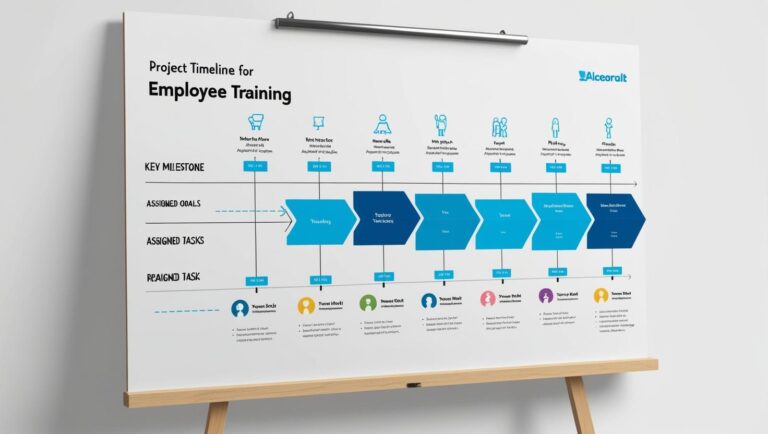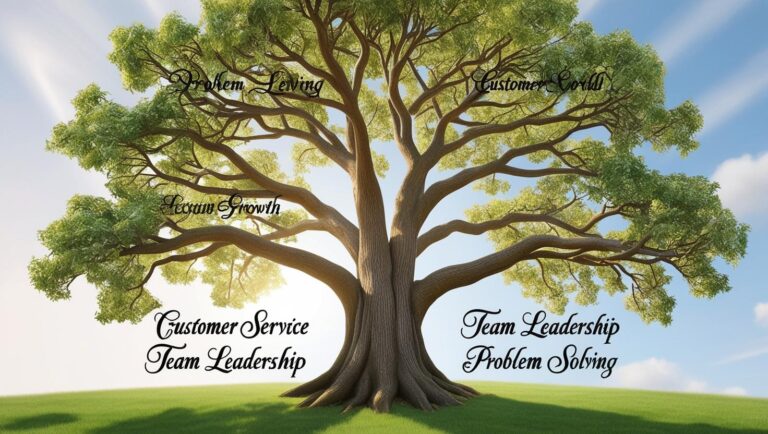How to Document Informal Training (Without Losing Your Mind)
In small businesses, informal training is often the secret engine that keeps operations moving smoothly. Junior staff learn on the job, team leads coach others in real time, and employees pick up new skills while meeting deadlines. Unlike formal classroom sessions or structured workshops, informal learning happens in the flow of daily work — but it counts just as much toward your Workplace Skills Plan (WSP) and Annual Training Report (ATR) if you document it properly.
The challenge is not whether informal training happens — it does, every day — but how to capture it efficiently and meaningfully without drowning in paperwork. This article will show you how to document informal training in a way that satisfies SETA reviewers, strengthens your submission, and supports real skills growth within your team.
Why Informal Training Documentation Matters
It’s tempting to skip the documentation step. After all, your staff are learning, performing, and improving, so why add more admin? The reality is that SETA reviewers need proof. Without it, even the most valuable on-the-job training goes unrecognised. No documentation means no grant access, and leaving evidence unrecorded essentially leaves money on the table.
Documentation isn’t about perfection. You don’t need to create multi-page reports or complex spreadsheets. What matters is showing that development took place, who was involved, and how it contributed to skill growth. This clarity not only satisfies compliance requirements but also reinforces your internal culture of learning.
Think of it this way: training is what happens, documentation is how it gets recognised, and recognition translates into better funding opportunities, stronger submissions, and a more confident approach to skills development.
What Counts as Informal Training?
Informal training is essentially any learning that improves an employee’s ability to perform their role, outside a formal classroom or accredited programme. Examples include:
On-the-job demonstrations: When a supervisor shows a junior staff member how to operate equipment or follow a process.
Job shadowing: Learning by observing a colleague or team lead handle tasks, problem-solving, or client interactions.
Peer coaching and mentorship: Junior employees receiving guidance from more experienced colleagues, either in small moments or over sustained periods.
Standard Operating Procedure (SOP) walkthroughs: Reviewing procedures as tasks are performed.
Daily or weekly team huddles: When discussions include tips, reminders, or process improvements.
Short digital learning bursts: YouTube tutorials, internal videos, or screen shares demonstrating tools, systems, or best practices.
In short, if a skill is learned and applied to the job, it qualifies as informal training. Even brief, ten-minute moments can be captured, as long as there’s a traceable learning outcome.
How to Prove Informal Training Happened
SETA reviewers are pragmatic. They don’t expect perfection, but they do require verifiable evidence. Evidence should answer three questions: who was trained, what they learned, and when it happened. Fortunately, gathering proof doesn’t require a huge administrative burden.
Attendance Registers
A simple sign-in sheet, whether digital or on paper, is sufficient. This can be as straightforward as an Excel file with the date, names of attendees, and the topic covered. For example, a quick session on stock labeling or fire safety can be logged easily and still counts toward your WSP/ATR.
Photos or Screenshots
A picture really is worth a thousand words. A photo of a team watching a safety video together, a screenshot of a Zoom demonstration, or an image of a staff member guiding a colleague through a process can serve as evidence. Save them in a dedicated folder labeled with dates and topics for easy reference.
Email Confirmations
Even short emails summarising a training session are valid proof. Ask team leads to send a quick note after demonstrating a new skill or coaching a junior employee. A one-paragraph summary listing participants and learning objectives becomes a documented record you can submit.
Learning Reflections or Logs
Encouraging staff to submit brief reflections or learning logs adds depth to your evidence. A one-paragraph note describing what they learned, how they’ll apply it, and any questions that arose is especially useful for mentoring or soft skills development. This approach not only provides proof but also reinforces the learning itself.
Manager Sign-Off Sheets
A manager’s tick-off sheet is another effective way to document informal training. Use a simple template where supervisors record who was trained, what skill or process was taught, and the date. For example:
“John was shown how to create a month-end sales report using the new dashboard. Signed: Supervisor | Date”
This creates accountability while keeping the process simple.
WhatsApp or Messaging Threads
Many small teams share micro-lessons via WhatsApp, Teams, or Slack. Voice notes, how-to videos, or quick tutorials can be captured as screenshots and saved with relevant names and dates. Even informal digital communications can be legitimate evidence if tied to a learning outcome.
Tracking Informal Training Without Losing Your Mind
The trick to documenting informal training efficiently is centralising it. A living tracker in Excel or Google Sheets works perfectly for small teams. This tracker should capture the essentials:
Date of training
Topic or skill addressed
Employees involved
Format (on-the-job, video, internal session)
Evidence file name or link
Over time, this simple log becomes your submission-ready record for the ATR, showing a clear, organised history of development across the team.
Examples of Informal Training in Action
Let’s walk through a real-world scenario to illustrate how informal training can be documented effectively.
Scenario: A floor supervisor trains staff on correct labeling procedures for export products.
Documentation Steps:
The supervisor sends a short email summarising the session and listing attendees.
The email is saved in a “Training Evidence” folder, dated and labelled with the topic.
The session is logged in the informal training tracker with the date, participants, and method.
This takes no more than ten minutes but meets SETA requirements and ensures the effort is recognised.
Another example might involve a peer coaching session, where a junior sales assistant is coached on objection handling by the sales manager. A short reflection from the assistant and a brief sign-off from the manager provide all the evidence needed. Over time, these small moments accumulate into a comprehensive record of ongoing skills development.
What Doesn’t Count
To avoid wasting time documenting activities that won’t be recognised, be clear about what doesn’t qualify as informal training:
Casual chats or social interactions without learning objectives
Mentoring that is purely social without development intent
Repeating tasks that do not involve new learning
Anything lacking a date, topic, or verifiable context
The guiding principle is that the activity must result in skills growth or improved competency. If it doesn’t, it doesn’t count toward your WSP/ATR.
Making Informal Training Work for Your WSP/ATR
Documenting informal training isn’t just about compliance — it’s an opportunity to showcase your business’s learning culture. Thoughtful documentation demonstrates to SETA that your team is being developed intentionally, even if resources are limited. It also strengthens your grant eligibility by providing clear evidence of skills development activity.
Here’s how to maximise the impact of your informal training documentation:
Plan and schedule small sessions: Even brief, recurring check-ins or skill demonstrations can be logged.
Encourage staff participation in reflections: Asking employees to write a short note about what they learned reinforces learning and provides additional evidence.
Centralise records: Keep all evidence, whether emails, screenshots, or sign-off sheets, in one accessible folder.
Update the tracker regularly: Don’t wait until submission time to capture evidence — make it a habit.
Link learning to outcomes: Where possible, show how the informal training improved performance, reduced errors, or enhanced customer service.
By approaching informal training in this structured way, small businesses can capture all the learning that is already happening — and transform it into a credible, reportable record.
Turning Everyday Learning Into Strategic Skills Development
Small businesses often underestimate the value of informal learning because it doesn’t look like traditional classroom training. However, this kind of on-the-job coaching and peer mentoring is often the most impactful.
Consider a small retail team learning new point-of-sale software. Instead of scheduling a costly workshop, the store manager demonstrates tasks during downtime. Junior staff practice while transactions occur, receiving immediate feedback. By documenting these micro-learning moments, the business can show SETA that development occurred while also enhancing operational efficiency.
Informal training also promotes engagement and knowledge retention. Employees learn in context, immediately apply new skills, and develop confidence. And when tracked correctly, this real-world learning contributes to the WSP/ATR in a meaningful way.
The Bottom Line
Informal training is the lifeblood of small businesses. It happens every day, in real time, and in the midst of operational priorities. The key is not to let these learning moments go unnoticed.
By implementing a simple documentation process — attendance registers, photos, email summaries, reflections, or sign-off sheets — you turn everyday learning into reportable evidence. Using a central tracker ensures consistency and simplifies submission preparation.
Documenting informal training doesn’t have to be stressful or time-consuming. It’s about capturing the reality of learning in your business. With a few minutes of admin per session, you can strengthen your WSP/ATR, improve grant eligibility, and demonstrate a commitment to genuine skills development.
Remember, training is what happens, documentation is what gets recognised, and recognition leads to stronger submissions, discretionary funding, and a more confident approach to workplace skills planning.
Small businesses that embrace this approach consistently find that what they’re already doing in the flow of work can be leveraged to create credible, impactful, and SETA-compliant skills development records.



